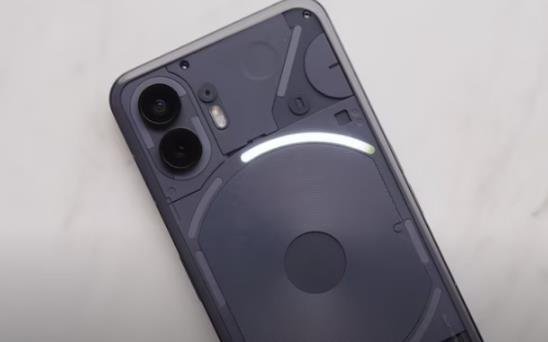Nothing, a tech company founded by former OnePlus co-founder Carl Pei, has launched its second smartphone, the Nothing Phone (2), which features a sleek design, a powerful processor, and a unique LED interface called the Glyphs. The phone is available in two colour options: dark grey and white, and comes with three capacity options: 8GB RAM + 128GB storage, 12GB RAM + 256GB storage, and 12GB RAM + 512GB storage. The phone is priced at RM2,999 for the base model, and RM3,499 for the highest variant.
What are the Glyphs?
The Glyphs are the most distinctive feature of the Nothing Phone (2). They are flashy LED panels on the back of the phone that can display different light and sound sequences for each contact and notification type. The idea is to help users focus more on the world rather than the phone screen, by letting them put their phones face-down and only react to notifications that are assigned as urgent.

The Glyphs can also be used for other functions, such as a countdown timer, a battery metre indicator, a volume checker, and a portable ring light. Users can also create their own Glyph ringtones using the Composer app, which lets them tap each pad to trigger a different light and sound combination.
How is the performance and display?
The Nothing Phone (2) is powered by the Qualcomm Snapdragon 8+ Gen 1 processor, which is one of the most advanced chipsets in the market. The phone also supports 5G connectivity, Wi-Fi 6E, Bluetooth 5.2, NFC, and wireless charging. The phone has a 4,500 mAh battery that can last up to a day on moderate usage, and supports fast charging up to 65W.
The phone has a 6.7-inch flexible LTPO OLED display with a resolution of 2400 x 1080 pixels and a refresh rate of up to 120Hz. The display is curved at the edges and has minimal bezels. The phone also has an in-display fingerprint scanner and a punch-hole cutout for the front camera.
How is the camera quality?
The Nothing Phone (2) has a dual rear camera setup that consists of a 50 MP main camera with an f/1.8 aperture and optical image stabilization (OIS), and a 16 MP ultra-wide-angle camera with an f/2.2 aperture and a 123-degree field of view. The rear cameras can record videos up to 8K resolution at 30 fps, or 4K resolution at 60 fps. The phone also has a dedicated night mode, a portrait mode, a pro mode, and a slow-motion mode.
The front camera is a 32 MP sensor with an f/2.0 aperture that can capture selfies and video calls with good clarity and detail. The front camera can also record videos up to 4K resolution at 30 fps, or 1080p resolution at 60 fps. The front camera also has a beauty mode, a portrait mode, and an HDR mode.
What is the Nothing OS 2.0?
The Nothing Phone (2) runs on the Nothing OS 2.0, which is based on Android 12. The Nothing OS 2.0 is designed to match the phone’s hardware design, with an emphasis on functional customisation and simplicity. The Nothing OS 2.0 also supports widgets that can be accessed from the home screen, the lock screen, or the quick settings panel. Users can also customise their own themes, icons, fonts, wallpapers, and sounds.
The Nothing OS 2.0 also integrates with other Nothing products, such as the Ear (2) wireless earbuds and the Watch (1) smartwatch. Users can easily pair their devices using the Nothing X app, which also lets them control their settings and preferences.
Is the Nothing Phone (2) worth buying?
The Nothing Phone (2) is a stylish smartphone that offers a unique LED interface, a powerful performance, a decent display, and a good camera quality. The phone also has a sleek design, a fast charging battery, and a user-friendly software. The phone is suitable for those who love aesthetics and innovation, and want to stand out from the crowd.
However, the phone also has some drawbacks, such as its large size, its lack of water resistance, its limited storage options, and its high price tag. The phone also faces competition from other flagship smartphones that offer more features and better specifications.
